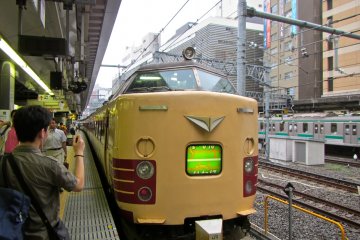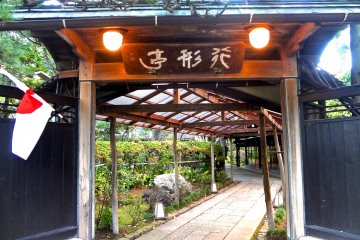Niigata Prefecture, situated along Japan’s northwestern coast facing the Sea of Japan, is renowned for its stunning landscapes, including the majestic peaks of the Japanese Alps and lush rice paddies. Famous for its exceptional sake and fresh seafood, Niigata is home to the picturesque Sado Island and scenic treasures on the mainland. This prefecture offers a unique blend of natural beauty and cultural heritage, providing visitors with diverse experiences throughout the year.
Sightseeing spots and experiences
Northern Culture Museum

What was once the home of the wealthy Ito Family, prosperous landowners and merchants, is now a museum that houses eight generations of the family’s collection of artworks and documents with a portion of the 6,000 items on display. Completed in 1889, the traditional Japanese-style wooden home is built on a 29,100 square meter site with 65 rooms and perfectly landscaped gardens, which are beautiful to view in all four seasons. Visitors can enjoy lunch at one of the two restaurants, and there is even an inn located on the grounds for those who want a deeper experience of the culture and history of life on the Ito Estate. In downtown Niigata City there is a more accessible Niigata Branch that besides a Japanese house and garden, displays materials and calligraphy from famed Japanese poet and calligrapher Aizu Yaichi.

Access: It’s about one hour by bus (S94 or S95) from Niigata Station (Google Map)
Naeba Dragondola

Naeba Dragondola, Japan’s longest gondola lift, spans 5.5 kilometers and connects Naeba Ski Resort to Tashiro Station near Kagura Ski Resort. Offering scenic views of Mount Naeba and surrounding forests, it’s a popular attraction in both winter and autumn, showcasing vibrant autumn foliage and snowy landscapes for visitors.

The 25-min journey is ripe with photo spots along the way, including a dramatic yet graceful descent over the Kiyotsu River with its crystal clear rapids flowing at full pelt, or the emerald green glow of Futaiko lake that beckons on the horizon.

At the summit a number of smaller chairlifts exist to ferry you around to higher vantage points (including several over Lake Tashiro), while Tashiro Ropeway—also at the summit—promises another mesmerizing ride along a 10-min course that gives you a much closer look of Futaiko lake itself.
Access: Naeba Dragondola is reached by a regular shuttle bus service that departs from the terminal at Schnee, the entrance to Naeba Ski Resort. It’s a 5-minute drive from Prince Naeba Ski Resort. (Google Maps)
Tunnel of Light @ Kiyotsukyo

The Tunnel of Light at Kiyotsu Gorge in Niigata is an immersive art installation that transforms a former viewing tunnel with mirrored surfaces, framing the natural beauty of the gorge. Seasonal reflections of lush greenery, vivid autumn foliage, and snowy winter scenes create a captivating, dreamlike experience for visitors. The tunnel was designed by MAD Architects, led by Ma Yansong, as part of the Echigo-Tsumari Art Triennale in 2018.
Kiyotsu Gorge (Kiyotsu-kyo) is one of Japan’s three greatest gorges, whos V-shaped rising canyon over the Kiyotsu River is a designated national scenic beauty spot. It’s also a designated natural monument known for its unique vertical columns of rocks formed by historical volcanic activity.
Access: It’s a 25-min drive from Echigo Yuzawa Station on the Joetsu Shinkansen Line (Google Maps)
Sado Kinzan
Sado Kinzan, a historic gold and silver mine on Sado Island, operated from the early 1600s until as recently as 1989. One of Japan’s most recent UNESCO World Heritage site additions (since July 2024), the site features mine tunnels, exhibitions, and machinery, offering insights into Edo-period mining techniques and Japan’s industrial heritage.
Some of the highlights include the Doyu no Warito—a mountain literally split in two by past mining activity—and a walk through the hand-dug Sodayu Mine.
Access: A 40-min drive from the Ryotsu Port Terminal (Sado Kisen), on Sado Island (Google Map)
Hakkaisan Brewery at Uonuma no sato

Hakkaisan Brewery is the centerpiece attraction at the scenic rural village of Uonuma no sato that has grown up around it and now comprise several shops, restaurants, cafes, a beer brewery and shochu distillery.

Hakkaisan is renowned for its premium sake, crafted from locally sourced rice and pure snowmelt water from Mount Hakkai. Enjoy a guided tour which includes a look at their Yukimuro—a giant snow chamber that works like a “natural refrigerator” with winter’s heavy snow stored and used over the remainder of the year to cool the brewery’s facility entirely naturally via circulating the cellar’s cool and moist air.

Explore their sake offerings and enjoy a sake tasting before browsing the brewery’s sake collection.

Access: 5-minute drive from Itsukamachi Station, on the JR Joetsu Line (Google Maps)
Restaurants and cafes
Hakkaisan Brewery Eateries

Continuing on from our introduction of Hakkaisan Brewery above, be sure not to miss some of the other facilities Uonuma no sato has to offer.
The Satoya confectionary uses Hakkaisan’s own sake and sake by-products in their lineup. Indulge your sweet tooth by trying their baumkuchen made with sake lees at the cafe’s second-floor space, while enjoying gentle views of Niigata’s countryside outside.

Inside the main Hakkaisan Yukimuro Cellar facility, they also serve koji-based drinks at the Yukimuro Cafe — try this refreshing take on a traditional milkshake.

Access: 5-minute drive from Itsukamachi Station, on the JR Joetsu Line (Google Maps)
Niigata Honcho Suzuki Sengyo

Suzuki Sengyo is a traditional fish market eatery inside the Aomi Shopping Center off the Honcho-dori shotengai (traditional shopping street) in downtown Niigata City.

Here you can not just browse the day’s latest catch but request dishes prepared fresh to order, like the local speciality catch of Nodoguro, or blackthroat seaperch.

Access: From Niigata Station, it’s about a 10 minute ride by local bus (B10 / C21 / C32) (Google Maps)
Accommodations
Echigoyuzawa Onsen, Tsukioka Onsen, Senami Onsen, Matsunoyama Onsen

Niigata Prefecture is home to several renowned hot spring resort areas, like the Echigo-Yuzawa resort area on the Joetsu Shinkansen Line. This region, popular with skiers and snowboarders, is also popular for its historical hot spring heritage, with seven main hot springs making suitable destinations for weary winter sports enthusiasts. The mild alkaline quality to the water is great for the skin and healing muscles—especially those exhausted from a day on the slopes.

Tsukioka Onsen is a small hot spring town just outside Niigata City. Dating back to 1915, the hot springs here are renowned for their high sulfur concentrations and waters, that change from emerald green to milky white through the seasons, which can leave your skin feeling moisturized. Explore the town’s small stores, stay in a local ryokan and perhaps catch a glimpse of a local geiko—Niigata geisha—in traditional kimono wear going about their business.

Further to the north in the Murakami region, Senami Onsen is a more coastal hot spring resort that allows you to enjoy a sunset over the Sea of Japan while you soak and relax. The spring water here is 95 degrees at source — here in the southern foothills you can even try boiling an egg at the source.

In the snowy mountains of Tokamachi, Matsunoyama Onsen is renowned for its medicinal hot spring waters that are said to originate in 12-million-year old fossilized seawater which gives the water a unique medicinal quality. It is said Matsunoyama Onsen is one of Japan’s top 3 medicinal onsen whose hot spring waters have 15 times more minerals than typically required. To sample them at their best, stay at a local ryokan like Izumiya or Hinanoyado Chitose on your visit here.
Visiting Niigata Prefecture
Niigata Prefecture awaits, offering an inspiring blend of majestic mountains, scenic coastlines, and cultural richness. Whether exploring the stunning landscapes of the Japanese Alps, indulging in local sake and fresh seafood, or visiting historic sites like the Northern Culture Museum, Niigata promises a unique and unforgettable journey. Embrace this captivating destination and experience its natural and cultural wonders firsthand.
Access to Niigata
Niigata is easily accessible by plane, train, and bus.
Plane
Niigata’s main airport, Niigata Airport (KIJ), is located in northern Niigata City along the coast with the Sea of Japan. It can be reached from the central JR Niigata Station by a direct airport limousine bus (26min) or local bus services (40min). For the domestic market, Niigata flights are better served by Sapporo (85min) and Osaka ITM (60min) given the well-established train connection that already reliably serves Tokyo.
Train
The Joetsu Shinkansen connects Tokyo and Niigata by a 2-hour train journey, with the rest of the prefecture well-connected by train networks. Winter snow resort areas like Echigo Yuzawa are just 1hr 30min from Tokyo.
Bus
Niigata has numerous highway and night buses that connect to major stations like Tokyo, Osaka, Kyoto, and Nagoya. Buses are an affordable alternative to plane and train travel but have much longer travel times.



























